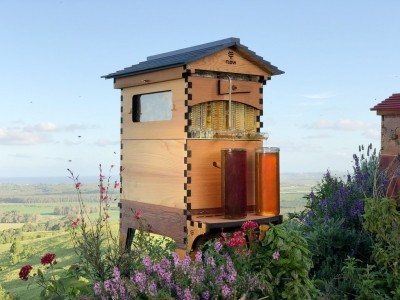From fermented foods to sustainable sourcing: How industry can help fight the world's vanishing biodiversity

Biodiversity for food and agriculture refers to all the plants and animals - wild and domesticated - that provide food, feed, fuel, and fiber.
Associated biodiversity is the myriad of organisms that make food production possible through ‘ecosystem services’ – from earthworms and fungi that keep soil fertile to bees and birds that pollinate plants; from coral that keep fish healthy to bacteria that fight crop and livestock pests.
Essential to our food system, it is disappearing by the day and, once lost, cannot be recovered, warns the FAO report State of the World’s Biodiversity for Food and Agriculture, published today (22 February).
The report authors allow the figures to speak for themselves: of the 6,000 plant species can be cultivated for food, just nine crops account for 66% of total crop production.
Forty animal species make up the world’s livestock production, and "a handful" of these provide most of our meat, milk, and eggs. There are 7,745 local breeds of livestock in the world, and over one-quarter (26%) are at risk of extinction.
Meanwhile, nearly a third of fish stocks are overfished and more than half have reached their sustainable limit.
Food security and nutrition is at risk
As well as impoverishing ecosystems, a lack of biodiversity in food systems makes them highly vulnerable to shocks and can have dramatic consequences, from the Irish potato famine in the 1840s to the collapse of taro production in Samoa in the 1990s.
Compounded by our reliance on fewer and fewer species to feed ourselves, the increasing loss of biodiversity for food and agriculture puts food security and nutrition at risk,” said FAO’s director-general José Graziano da Silva.
The reasons behind this rapidly declining loss are the same in many countries: changing land and water uses, pollution, overexploitation and overharvesting, climate change, and population growth and urbanization.
Latin America and the Caribbean is the worst affected region globally in terms of declining wild food species, following by Asia-Pacific and Africa. However, the authors note this could be because wild food species attract more research there than other regions.
In Latin America specifically, pests, diseases, and invasive species are also a major threat for 'associated biodiversity'. This is the myriad of organisms that make food production possible through ‘ecosystem services’ – earthworms and fungi that keep soil fertile; bees and birds that pollinate plants; coral that keep fish healthy; and bacteria that fight crop and livestock pests.
Non-profit organization Slow Food International said: "The current industrial model of agriculture underpinning the global food system is destroying itself, and us with it."
"We must turn things around within the next 10 years or risk a total and irreversible collapse. This relies on combining modern knowledge and technology with its traditional counterparts, and redefining our approach to agriculture and food production, placing the preservation of biodiversity and ecology on equal footing with profit and productivity."
But... biodiversity-friendly practices are on the rise
The report makes for sobering reading but it also identifies some areas for optimism; biodiversity-friendly practices and approaches are on the rise, for instance.
Such practices include organic agriculture, integrated pest management, sustainable soil management, agroecology, diversified practices in aquaculture, and adopting ecosystem approaches to fishing. Of the 91 reporting countries, 80% said they used at least one.
“Biodiversity is critical for safeguarding global food security, underpinning healthy and nutritious diets, improving rural livelihoods, and enhancing the resilience of people and communities. We need to use biodiversity in a sustainable way, so that we can better respond to rising climate change challenges and produce food in a way that doesn’t harm our environment,” said Graziano da Silva.
An example of biodiversity-friendly NPD: Fermented foods
The FAO urges consumers to choose sustainably grown products, buy from farmers’ markets, or boycott foods seen as unsustainable.
It also calls on the private sector to explore biodiversity-friendly new product development. Fermented foods - the use of protective micro-organisms, such as bacteria, yeasts, and filamentous fungi, in food processing - could be one way to bring back food diversity.
Fermentation was developed to preserve food but it can also make food healthier, transforming traditional diets that are otherwise bland and high in starches, such as fufu (fermented cassava) in many African countries.
Micro-organisms are also used to produce many useful compounds for food manufacturers, such as enzymes, flavors, fragrances, and bacteriocins.
There are around 5,000 traditional fermented foods in the world, with classic examples including cheese, yogurt, and bread.
However, the report notes that, as manufacturers scale up processing to meet demand for current ‘on-trend’ products such as kombucha, kefir or kimchi, they often use batch starter cultures. “[This] reduces the uniqueness of the original product and leads to the loss of the characteristics that originally made it popular,” write the authors.
They call for more research into traditional fermentation techniques and improving the supply of starter cultures to small-scale producers.
The report also points out areas of best practice to be shared and emulated around the world:
Sustainable fishing in Panama
Marine conservation NGO Fundación MarViva has been working with eight coastal fishing communities in the Gulfs of Chiriquí and Montijo, training them on more sustainable fishing practices and promoting alternative businesses, such as whale watching and rural tourism.
It also developed microcredit schemes for fishermen, trained lobster harvesters in marketing and product management, and set up strategic alliances with private sector players.
This month, Fundación MarViva, also active in Colombia and Costa Rica, launched a quality seal ‘Shark-free ceviche’ for food service operators to use.
Nutritious, native and novel foods in Paraguay
For almost 40 years, the National University of Asuncíon in Paraguay has been researching the chemical, nutritional and pharmacological properties of plants.
One key research project studies the nutritional content of native wild foods with the aim of creating a case for their conservation and sustainable use.
Some of the plants they have looked at are the South American mesquite (Prosopis alba) harvested among indigenous communities, native wild raspberry, and fresh common purslane (Portulaca oleracea) that grows in cities and urban areas.
Mexico’s culture collection
Mexico’s National Genetic Resources Centre (CNRG) is one of the most important germplasm banks in the world.
Opened in 2012, the center collects seeds, plants, spores, DNA and micro-organisms to safeguard the country’s genetic resources. As of 2015, it had around 3,000.
“Its mission is to serve as a public collection that provides high-quality services in the fields of conservation, identification and characterization of micro-organisms […] with the main aim being to conserve the diversity of micro-organisms of importance to food security,” said the FAO.
Mexico is one of 17 countries in the world considered to be ‘megadiverse’, and is the fourth most biodiverse country in the world. (Of the ten most biodiverse countries in the world, six are located in Latin America).




























